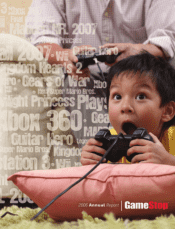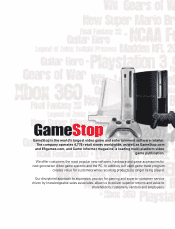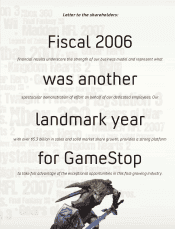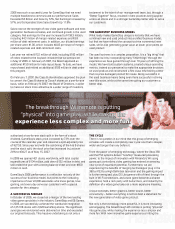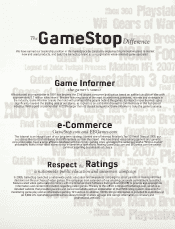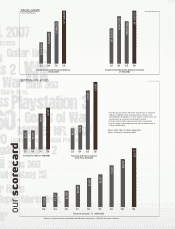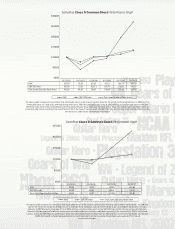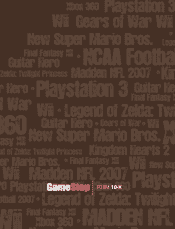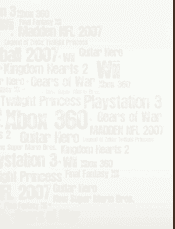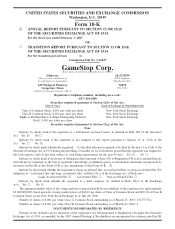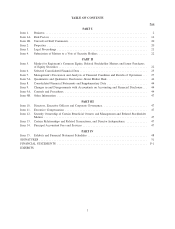GameStop 2006 Annual Report Download - page 6
Download and view the complete annual report
Please find page 6 of the 2006 GameStop annual report below. You can navigate through the pages in the report by either clicking on the pages listed below, or by using the keyword search tool below to find specific information within the annual report.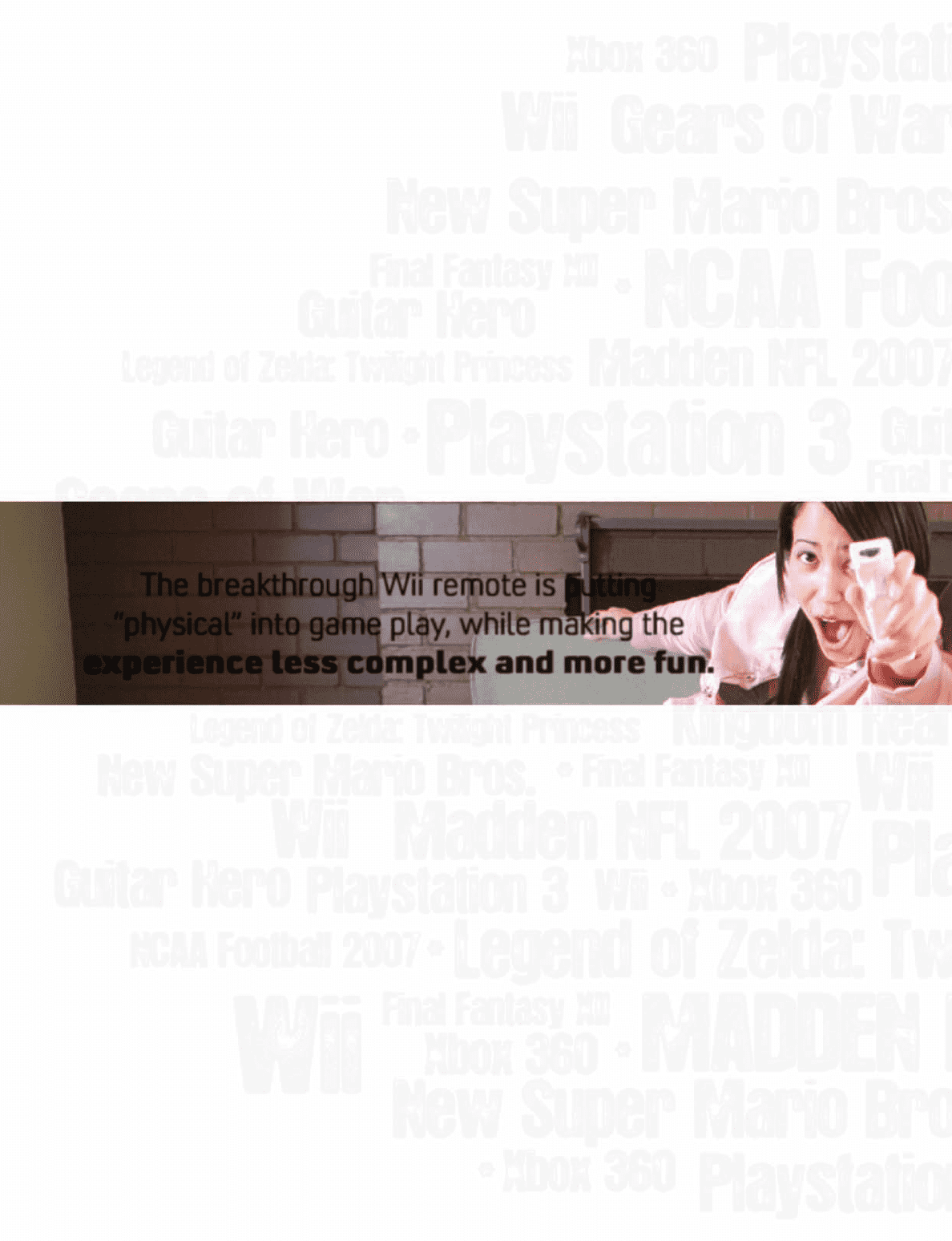
2006 was such a successful year for GameStop that we need
multiple headlines to communicate our performance: Sales
Exceeded $5 Billion and Grew by 72%, Net Earnings Increased by
57%, and Comparable Store Sales Growth Up 11.9%.
Sales rose on the strength of new video game software and next-
generation hardware consoles, and continued growth in the used
category. Net earnings for the year increased to $158.3 million,
including $4.3 million of merger-related expenses and $3.8
million of debt retirement costs. In addition, our diluted earnings
per share were $1.00, which includes $0.05 per share of merger-
related expenses and debt-retirement costs.
Last year we retired $122 million of debt, including $100 million
of notes related to the buyback initiative that we announced
in May of 2006. In February of 2007, the Board approved an
additional $150 million for note repurchases. To date, we have
repurchased and retired an additional $106 million in debt under
this program.
On February 7, 2007, the Class B shareholders approved the plan
to convert the Class B shares to Class A shares on a one-for-one
basis, while on February 9, 2007, the Board of Directors, in order
to make our stock more attractive to a wider range of investors,
authorized a two-for-one stock split in the form of a stock
dividend. GameStop’s stock price increased by 73% over the
course of the calendar year and closed at a split-adjusted price
of $27.55. Since year end with the combining of the A & B shares
and the stock split, the stock price has increased by just over
24% to $34.27 as of May 15, 2007.
In 2006 we opened 421 stores worldwide, with total capital
expenditures of $134 million, paid down $122 million in debt, and
still ended the year with a strong balance sheet and over $650
million in cash.
GameStop’s 2006 performance is a reection not only of the
success of our business model, but points to the increasing
importance of over 22,000 associates who know games, love
gaming, and every day serve our customers with a special
passion for the category.
A SUCCESSFUL MERGER
In October of 2005, we closed on a merger of the two leading
video game specialists in the industry: GameStop and EB Games.
In 2006, we successfully achieved the worldwide integration
of 2,351 EB stores with 2,026 GameStop stores. The signicant
synergies we envisioned were delivered on time and exceeded
our original forecasts. This massive undertaking is not only a
testament to the talent of our management team, but, through a
“Better Together” focus, resulted in best practices being applied
across all stores and in a stronger GameStop better able to serve
our customers.
THE GAMESTOP BUSINESS MODEL
What really makes GameStop unique is not only that we have
combined new and used product into a unied business model,
but that we have rened the concept to drive incremental new
sales, while also generating great value at lower price points on
used product.
The used business is a complex proposition. It is a “big thing” that
has been built by incorporating many “little things” through the
experience we have gained through over 10 years of rening the
model. We have built custom systems, created unique operating
metrics, trained our personnel to make the appropriate decisions
on used product and constructed a rst class refurbishing center
that recycles damaged product for resale. Being successful in
the used business means being even more successful in driving
new title sales, while at the same time giving our customers a
better deal.
THE CYCLE
There is no question in our mind that this group of emerging
consoles will create a completely new cycle: one that is deeper,
wider and longer than any before it.
From the power of emerging technology, where the Xbox 360
and the PS3 systems deliver “teraop” measured processing
power, to the impact of innovation with Nintendo’s Wii using
gyroscopic controllers, video gaming has entered an amazing
new cycle of expansive potential. Furthermore, we are
experiencing the benets of merging technologies: plug in the
360 or PS3 to a High Denition television and the gaming impact
is further energized; play DS Lite games with a friend through the
built in Wi-Fi connections, and a solo game becomes a shared
experience; hold a rock party with Guitar Hero, and instantly the
denition of a video game takes on a more expansive meaning.
Unique concepts, better graphics, better sound, better
connectivity – better everything is not too bold a statement for
the new generation of video game product.
Not only is the technology more powerful, it is more innovating
and engaging. The breakthrough Wii remote is putting “physical”
into game play, while making the experience less complex and
more fun. With new innovative game experiences hitting the
The breakthrough Wii remote is putting
“physical” into game play, while making the
experience less complex and more fun.

